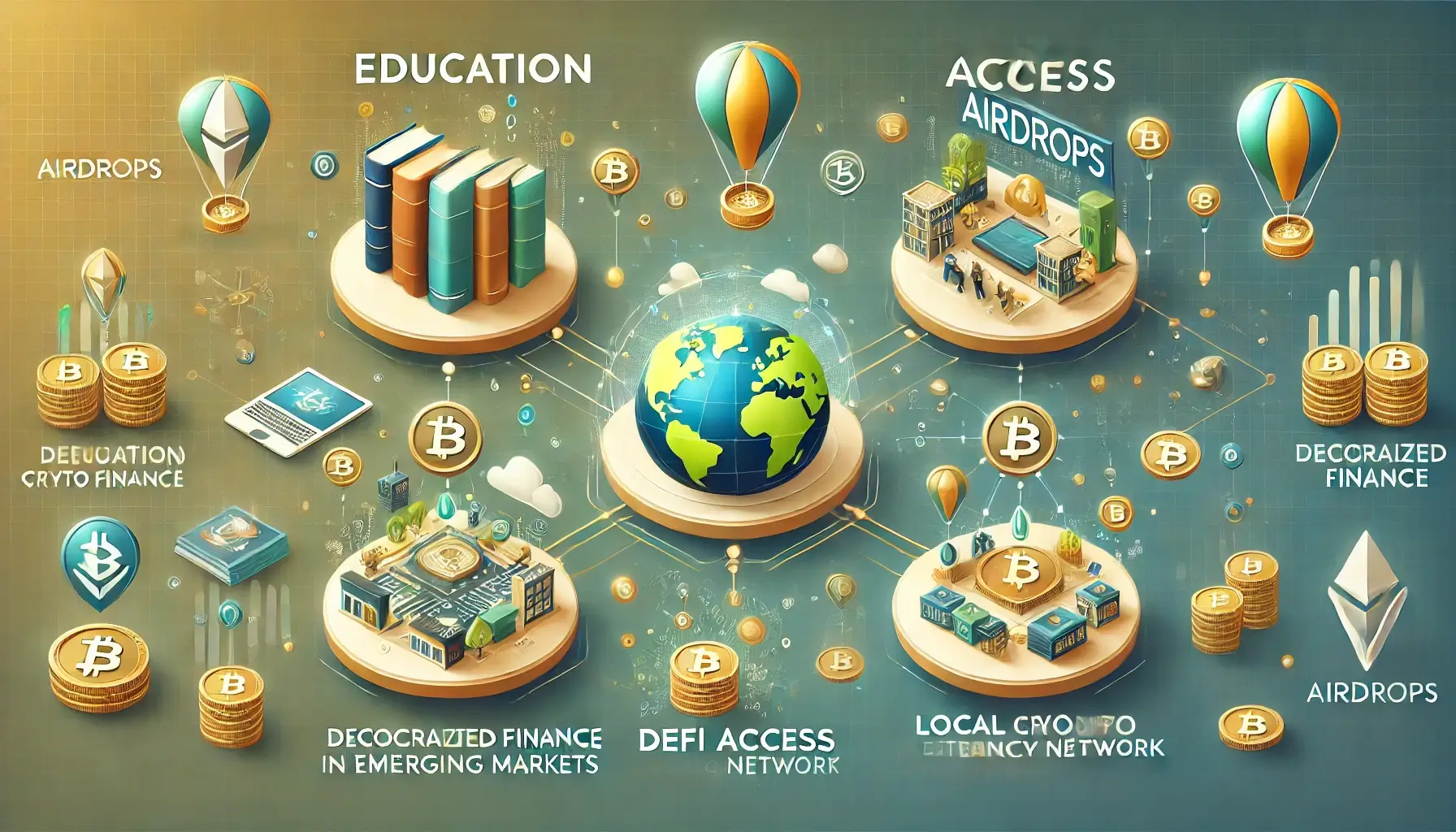Cryptocurrency airdrops are becoming a pivotal tool for blockchain projects looking to grow their communities, especially in emerging markets. By distributing free tokens, these projects are breaking through traditional adoption barriers and allowing users to interact with blockchain technology for the very first time.
Emerging markets, which include regions such as Africa, Southeast Asia, and Latin America, are ripe for cryptocurrency adoption due to issues like financial instability, lack of trust in centralized systems, and a high percentage of unbanked populations. Airdrops, which require no initial investment, are the ideal entry point for users in these regions to explore the potential of blockchain.
But what exactly makes airdrops so effective, and how are they shaping the adoption of tokens in developing economies? Let’s break it down step by step.
1. Lowering Financial Barriers to Entry
In many developing economies, financial constraints are the biggest hurdle to participating in cryptocurrency. Most individuals either can’t afford to buy cryptocurrencies or lack access to traditional payment systems required to fund an exchange account.
Airdrops solve this problem by offering free tokens directly to users. These tokens allow recipients to:
- Experiment with cryptocurrency platforms without any upfront investment.
- Learn how to trade or use tokens for payments.
- Hold tokens as an investment, with the potential for their value to increase over time.
Real-world example: In countries like Venezuela, where hyperinflation has rendered the local currency nearly worthless, cryptocurrency airdrops are providing an alternative store of value. Recipients can trade or use the tokens for everyday needs, creating a pathway to financial independence.
By removing financial risk, airdrops are effectively leveling the playing field and encouraging individuals to explore the benefits of blockchain technology.
2. Raising Awareness and Educating Communities
Airdrops don’t just distribute free tokens, they often come bundled with education campaigns. Since blockchain technology is still a mystery to many people in emerging markets, education plays a vital role in building trust and adoption.
Projects are creating tutorials, guides, and webinars as part of their airdrop campaigns, teaching users how to:
- Set up wallets to receive and store tokens.
- Transact using cryptocurrency for purchases or payments.
- Participate in decentralized finance (DeFi) platforms or staking opportunities.
For instance, Stellar (XLM) ran an airdrop campaign targeting underbanked populations. Alongside the free tokens, recipients were given step-by-step instructions on how to use wallets and make transactions. This hands-on approach helped turn airdrop participants into long-term users of the Stellar network.
By increasing awareness and simplifying blockchain concepts, airdrops are introducing entire communities to the possibilities of cryptocurrency.
3. Fostering Financial Inclusion
Emerging markets are home to more than 1.4 billion unbanked adults who lack access to traditional banking services. Cryptocurrencies offer a solution, but many people remain unaware of their potential or how to get started.
Airdrops are acting as a gateway to financial inclusion by:
- Providing access to digital wallets for storing tokens.
- Enabling participation in decentralized finance (DeFi) systems.
- Creating new payment systems that don’t rely on centralized banks.
Blockchain platforms like Celo (CELO) are targeting mobile-first users in Africa, where many people lack access to banks but own smartphones. By distributing free tokens, Celo is enabling peer-to-peer payments and empowering users to send money across borders at minimal cost.
This shift toward decentralized systems is empowering individuals to participate in the global economy, even in regions where traditional banking infrastructure is weak or nonexistent.
4. Stimulating Economic Activity
Airdropped tokens can also boost local economies by encouraging trade and commerce. Recipients can use their tokens for a variety of purposes, such as:
- Purchasing goods or services from merchants that accept cryptocurrency.
- Trading tokens on exchanges to generate additional income.
- Investing in DeFi platforms, staking, or yield farming to grow their wealth.
For example, in Southeast Asia, the Pi Network has created an ecosystem where users can trade their airdropped tokens for everyday goods like groceries or mobile data. This has led to the creation of new local markets that run entirely on cryptocurrency, stimulating economic activity in underserved regions.
5. Addressing Challenges of Airdrops
While airdrops offer tremendous benefits, they’re not without challenges. To maximize their impact, projects must address:
- Scams and Fraud: Many fake airdrops target vulnerable users, tricking them into sharing personal information or wallet credentials. Education and secure distribution methods are critical for building trust.
- Limited Internet Access: In remote regions, poor connectivity can make it difficult for users to participate in airdrop campaigns. Projects need to focus on mobile-friendly, offline-compatible tools.
- Knowledge Gaps: Without proper guidance, many recipients fail to use their tokens effectively. Blockchain projects must continue investing in education to close these gaps.
By addressing these issues, airdrops can remain a powerful tool for driving adoption in emerging markets.

6. The Future of Airdrops in Emerging Markets
As blockchain adoption accelerates, airdrops are evolving into more sophisticated campaigns designed to build sustainable ecosystems. Projects that focus on:
- Educating users beyond basic wallet setup, teaching them how to maximize token use.
- Creating real-world use cases, such as payments and loans, to drive long-term adoption.
- Engaging local communities through events and partnerships to strengthen trust.
These initiatives will ensure that airdrops don’t just hand out free tokens but also empower individuals to unlock the full potential of blockchain technology.
Conclusion
Airdrops are transforming the way cryptocurrencies are adopted in emerging markets. By providing free tokens, blockchain projects are lowering financial barriers, raising awareness, and fostering financial inclusion. With the right strategies, airdrops are proving to be a catalyst for economic growth and digital literacy in underserved regions.
For more insights and detailed guides on blockchain applications, visit our Cryptocurrency Comparisons Guides.
Stay Updated:
For the latest updates on cryptocurrency adoption and blockchain innovations, follow us on:
Special Offer:
Looking to trade cryptocurrencies and earn bonuses? Sign up on Bybit today and claim up to $30,000 in deposit bonuses. Don’t miss the chance to trade on one of the most trusted crypto platforms.
Home The Impact of Airdrops on Token Adoption in Emerging Markets
















